Self-Harm in Australia: Exploring Rationale & Healthcare Interventions
VerifiedAdded on 2023/04/21
|12
|987
|328
Report
AI Summary
This report delves into the complex issue of self-harm, examining the reported rationales behind this behavior as a coping mechanism for difficulties and stress, with a specific focus on the Australian context. It highlights that self-harm, also known as deliberate self-injury or parasuicide, often involves methods like cutting and self-poisoning, particularly among young individuals. The report provides Australian statistics indicating the prevalence of self-harm, its contribution to disease burden, and hospitalization rates. It further explores the factors that can increase self-harm behavior, such as family crises, physical disabilities, depression, trauma, anxiety, and emotional imbalance. It outlines the rationale behind self-harm, including attempts to replace emotional pain with physical pain, and discusses the associated risks, such as increased suicidal ideation and addiction. Finally, the report details various healthcare interventions implemented for people who self-harm, including psychiatric treatment, psychological counseling, medical treatment for injuries, harm minimization techniques, stress management, and support from friends, family, and doctors.
1 out of 12
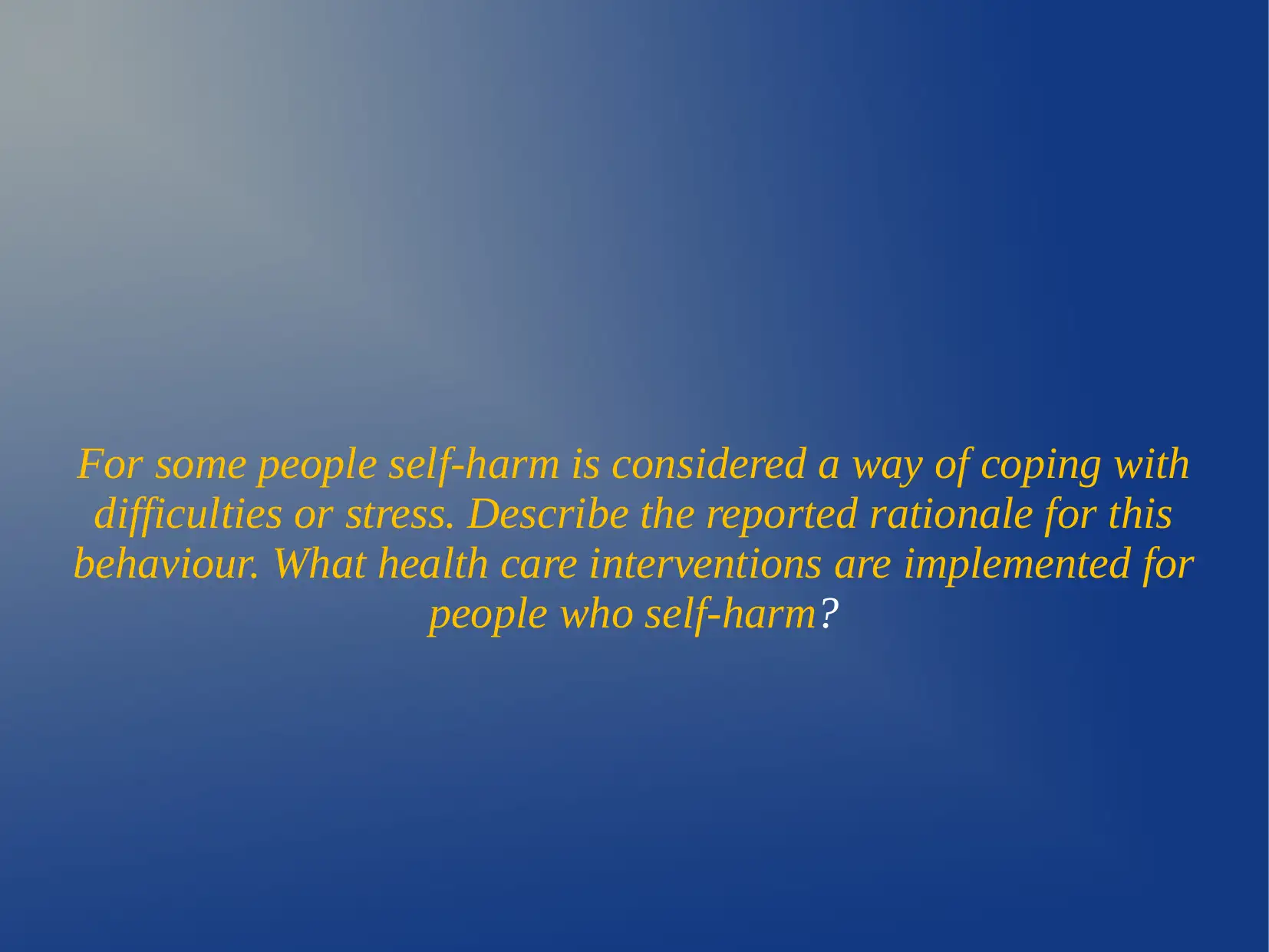
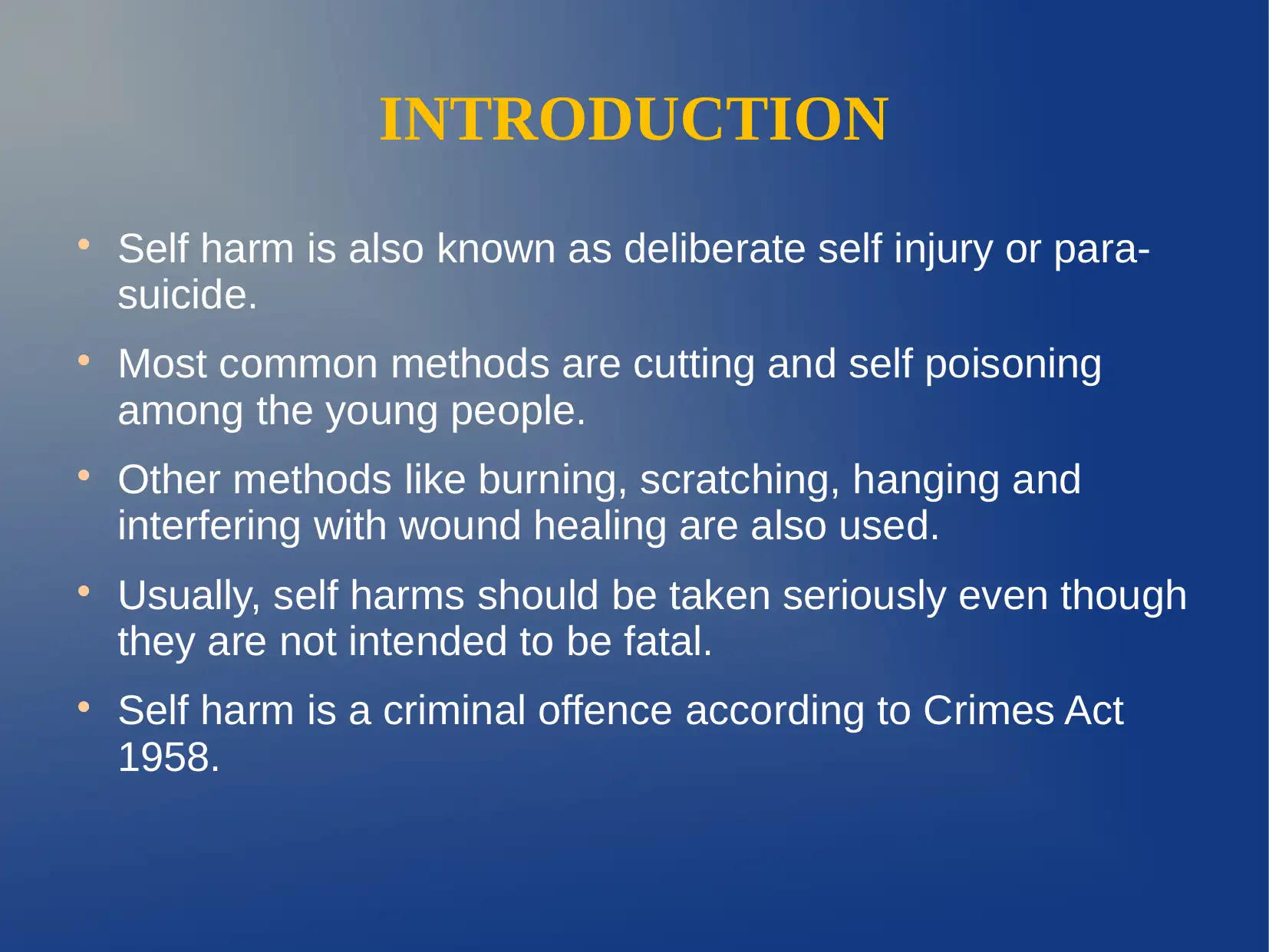
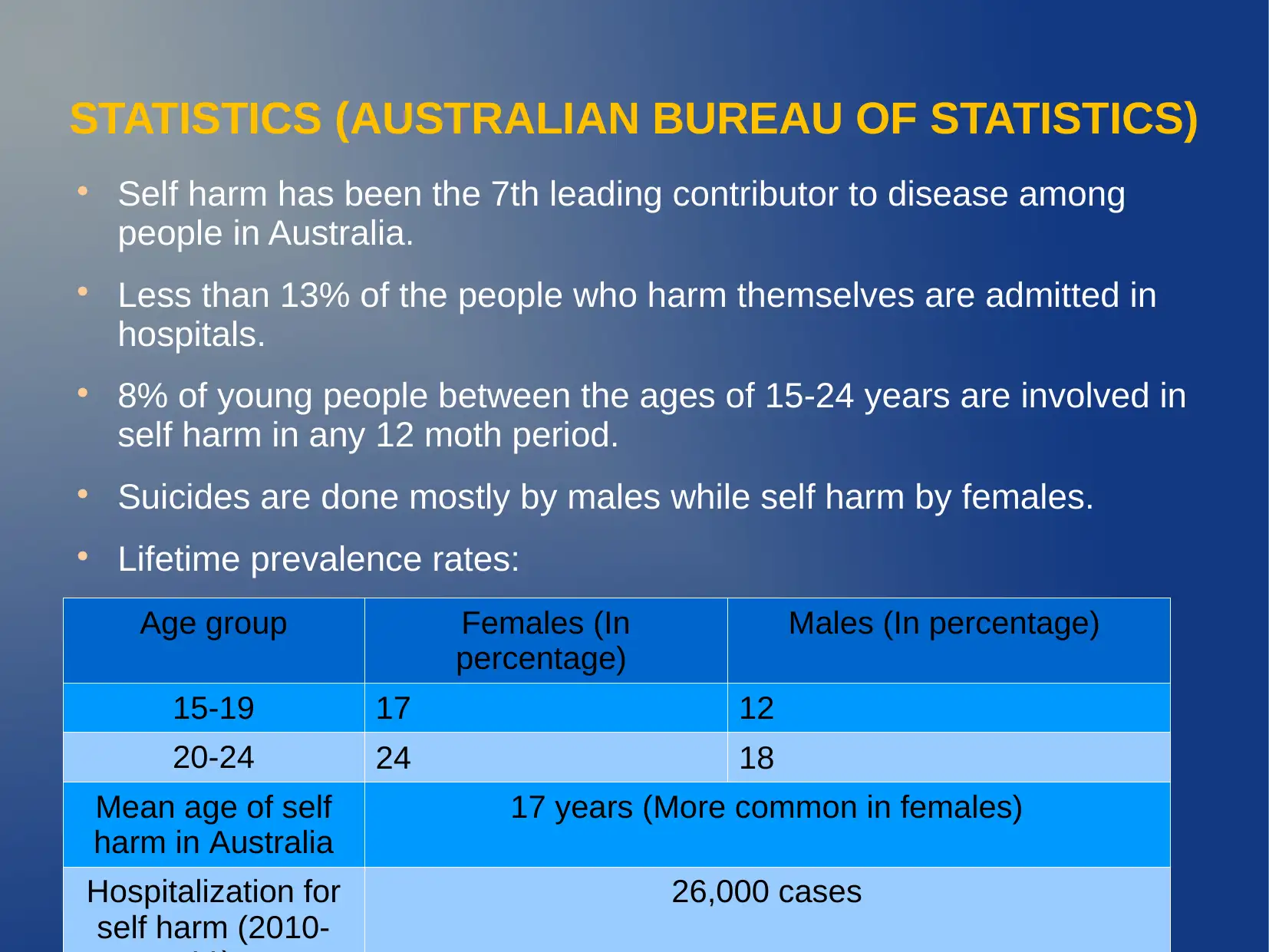

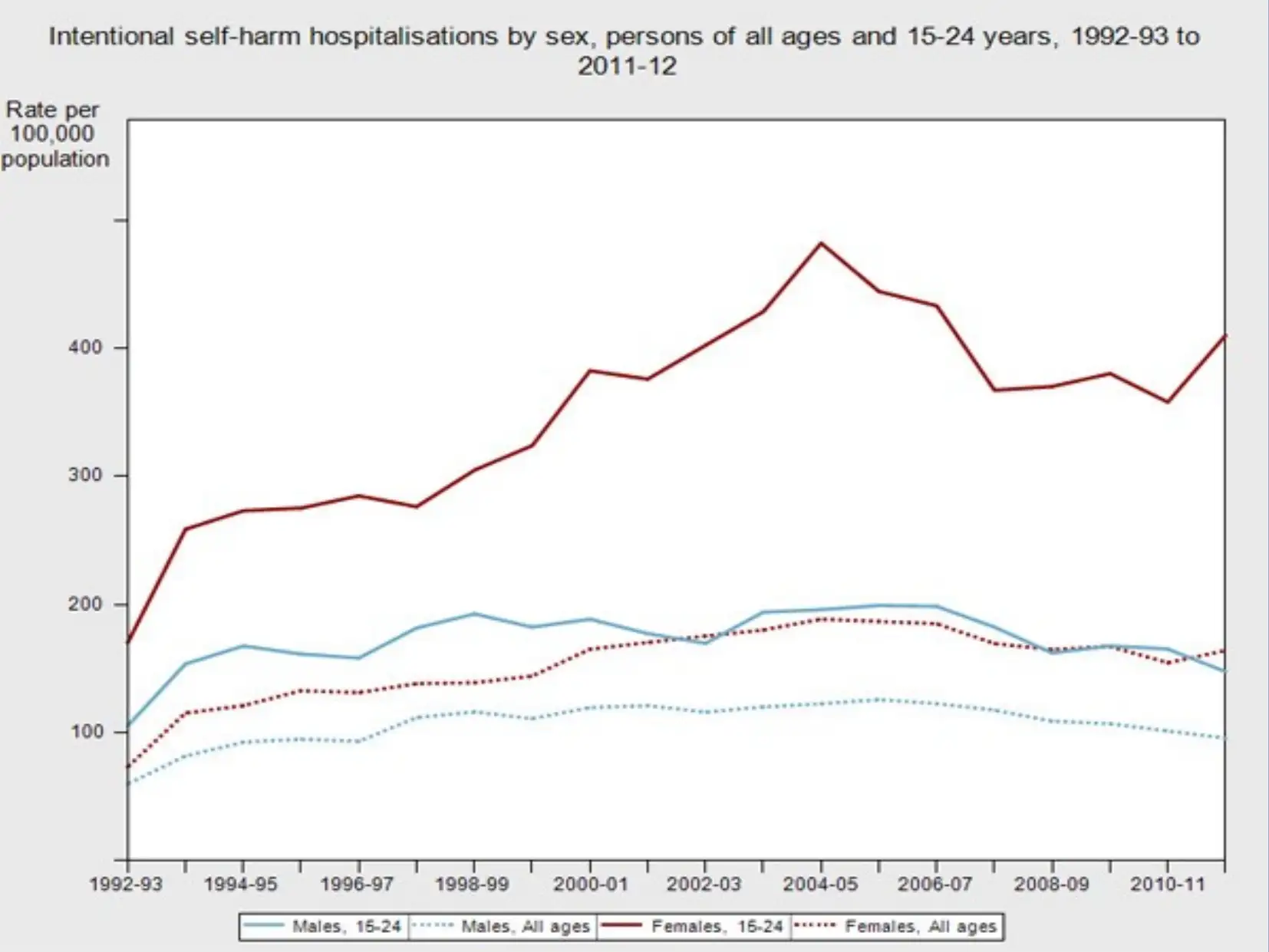
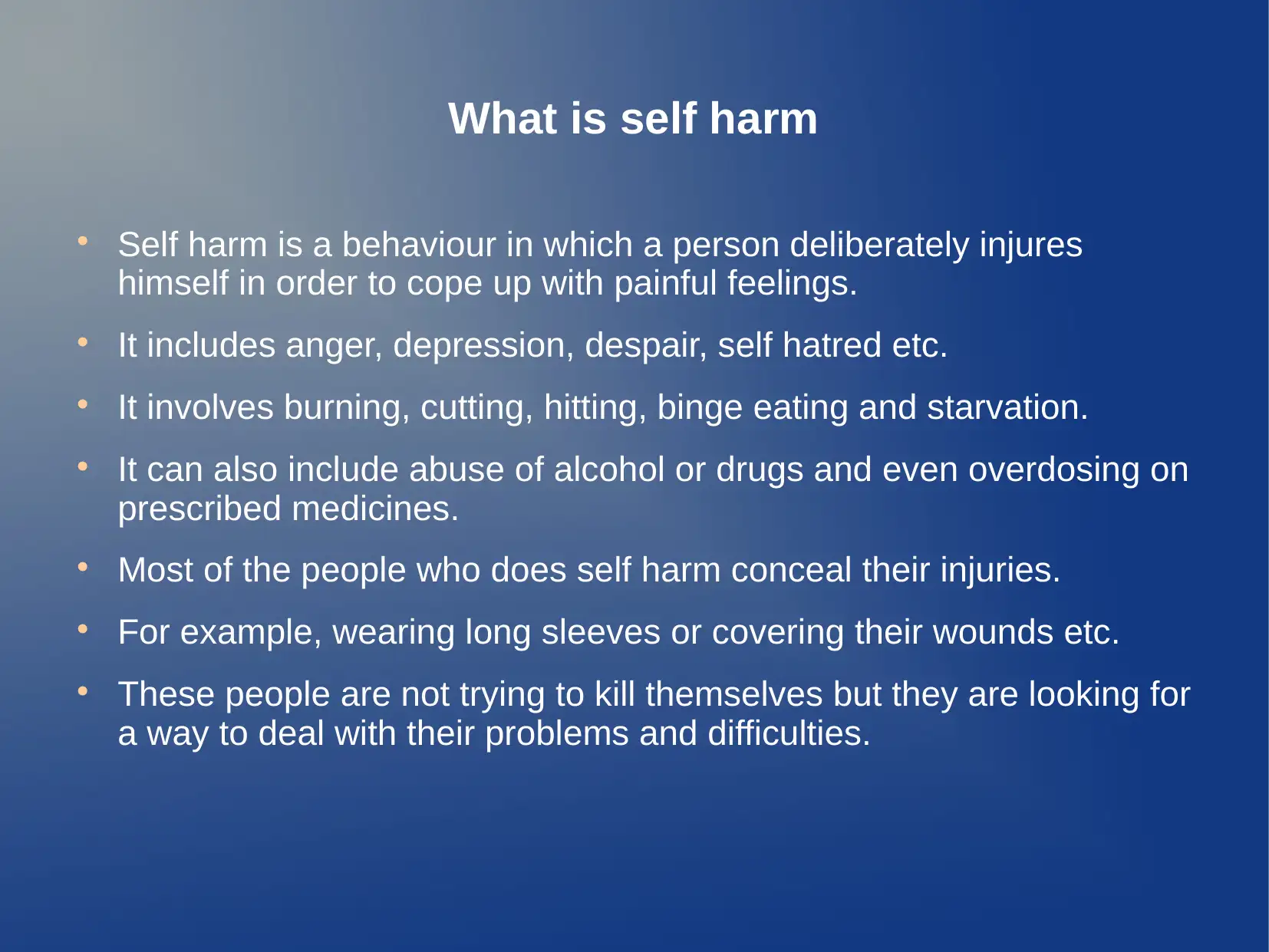
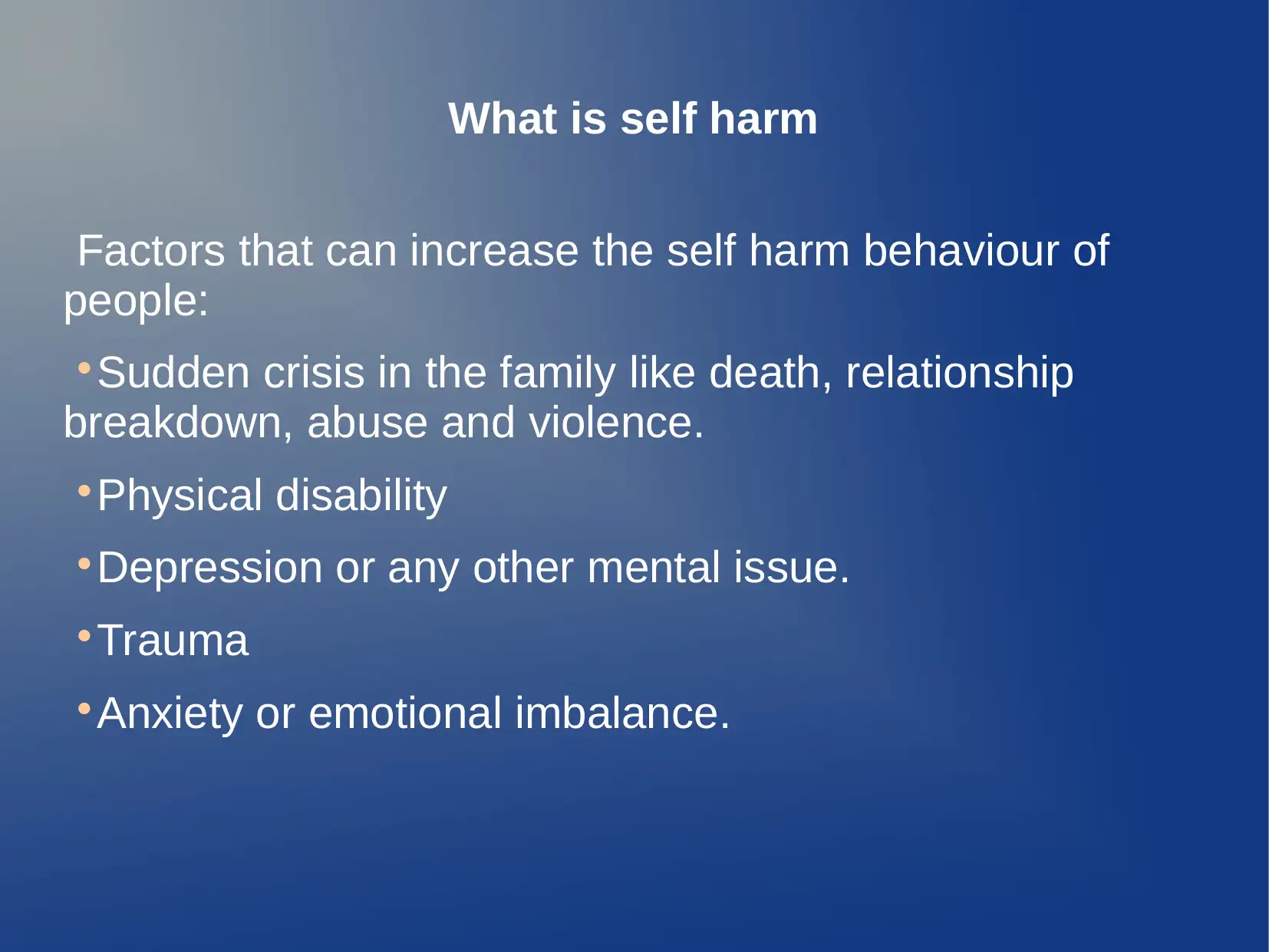
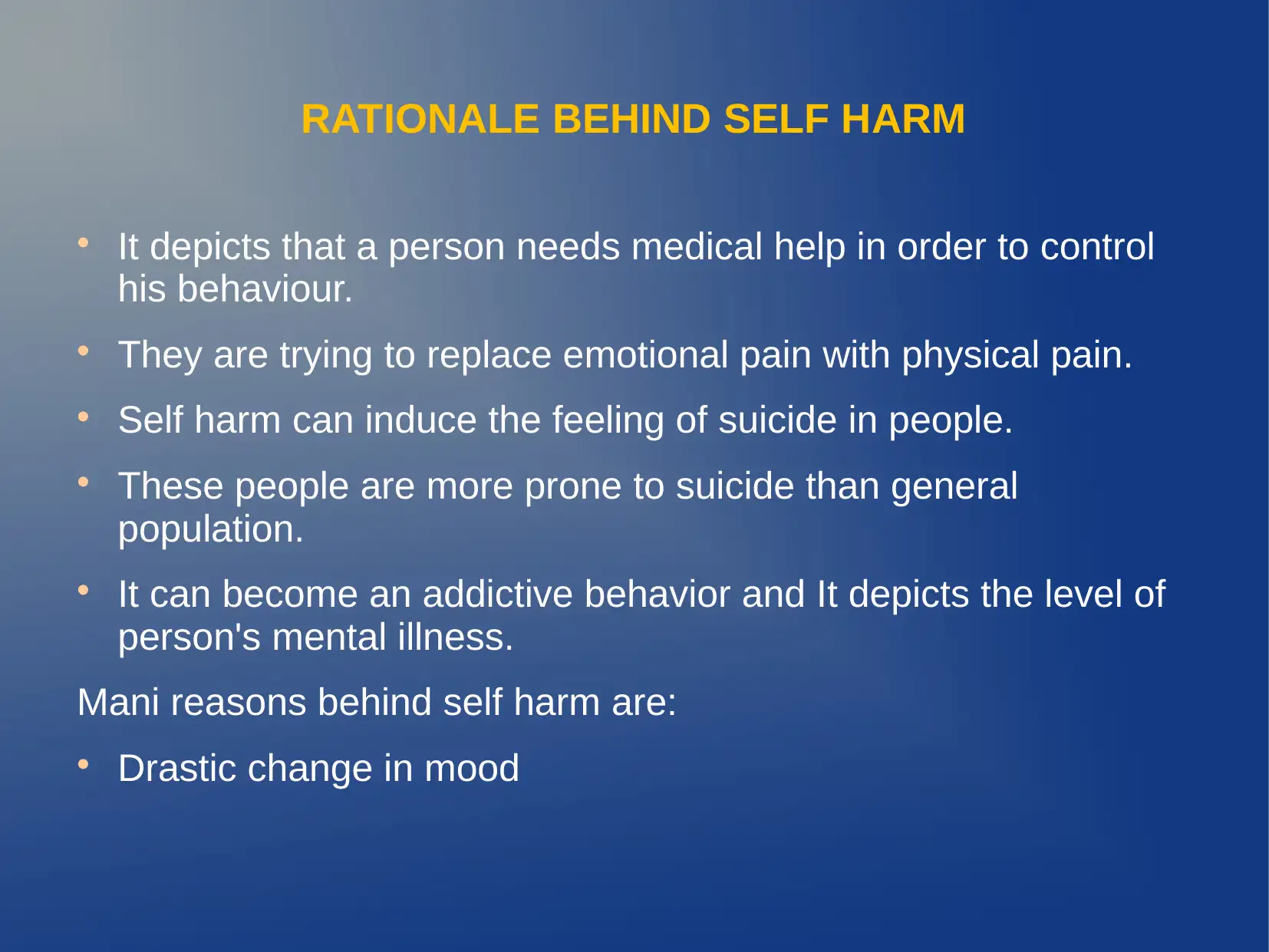
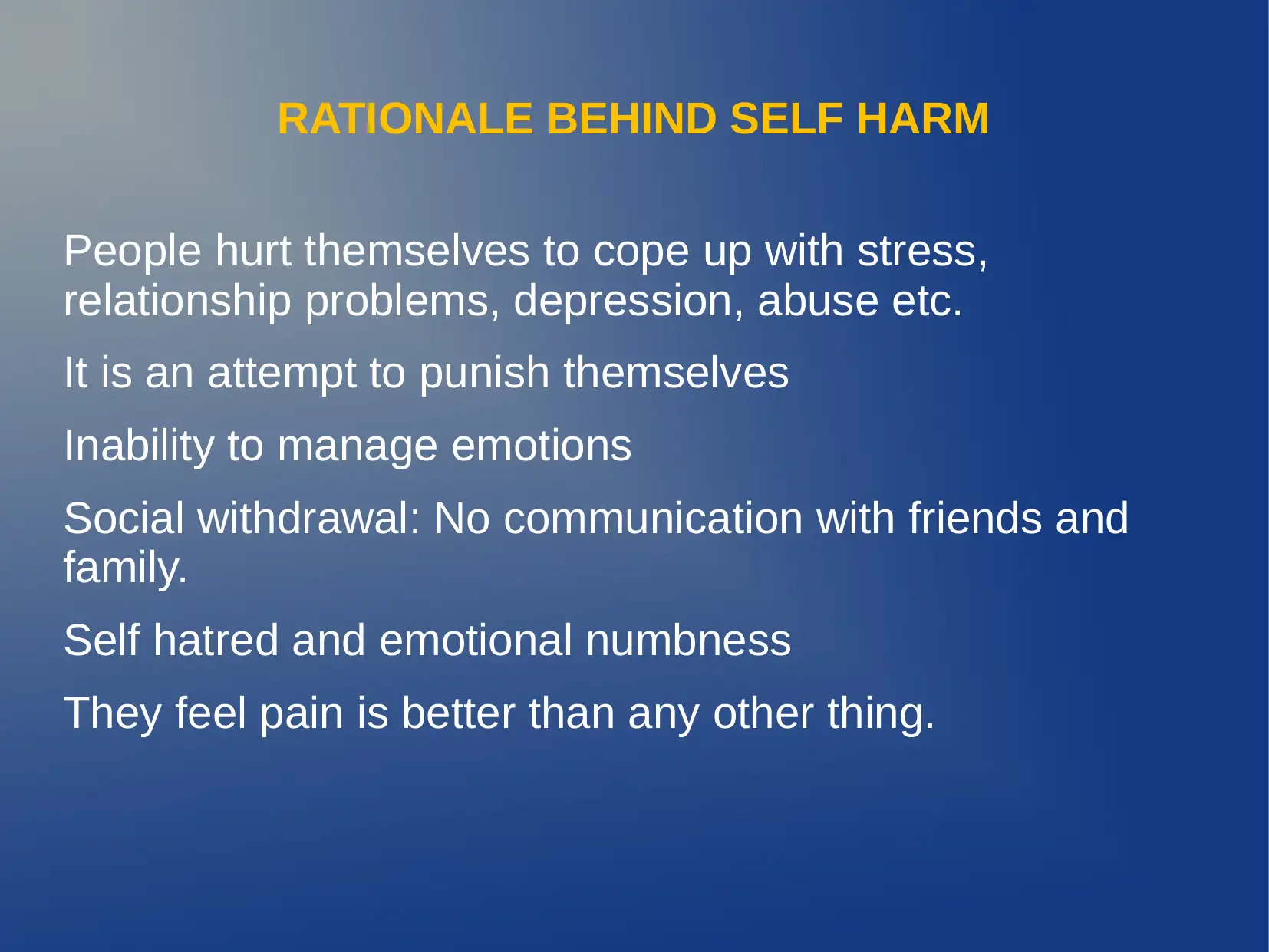
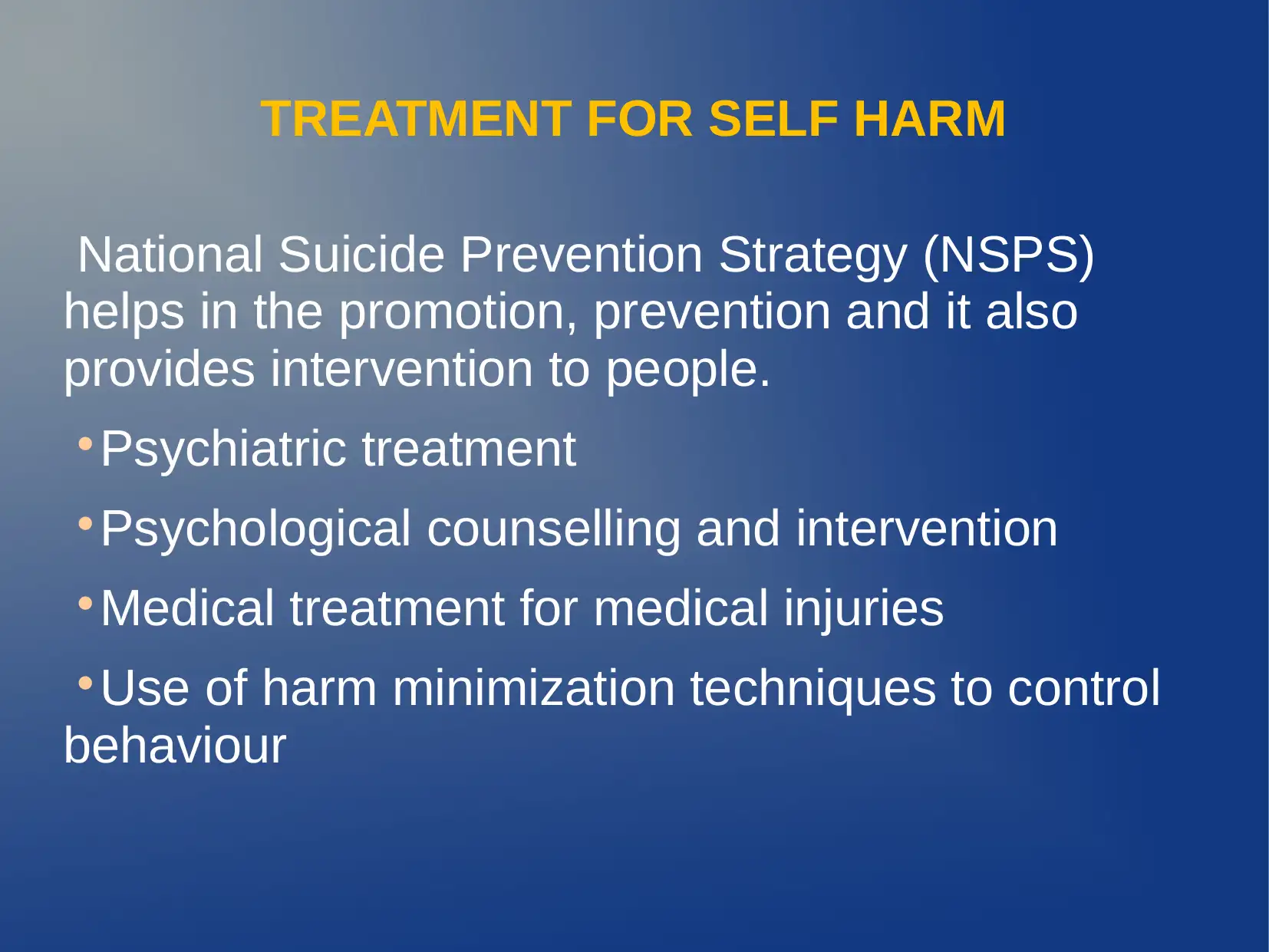
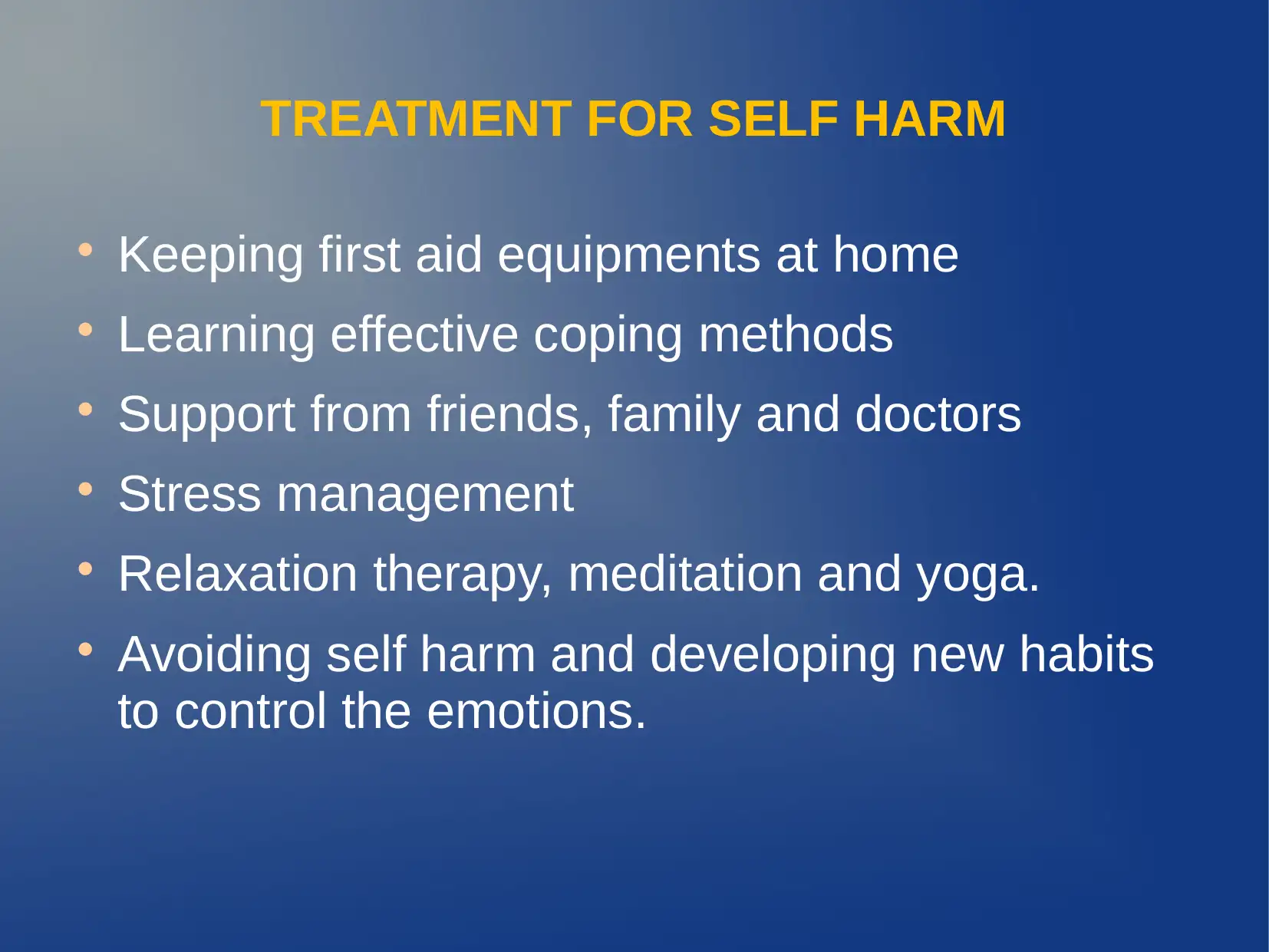
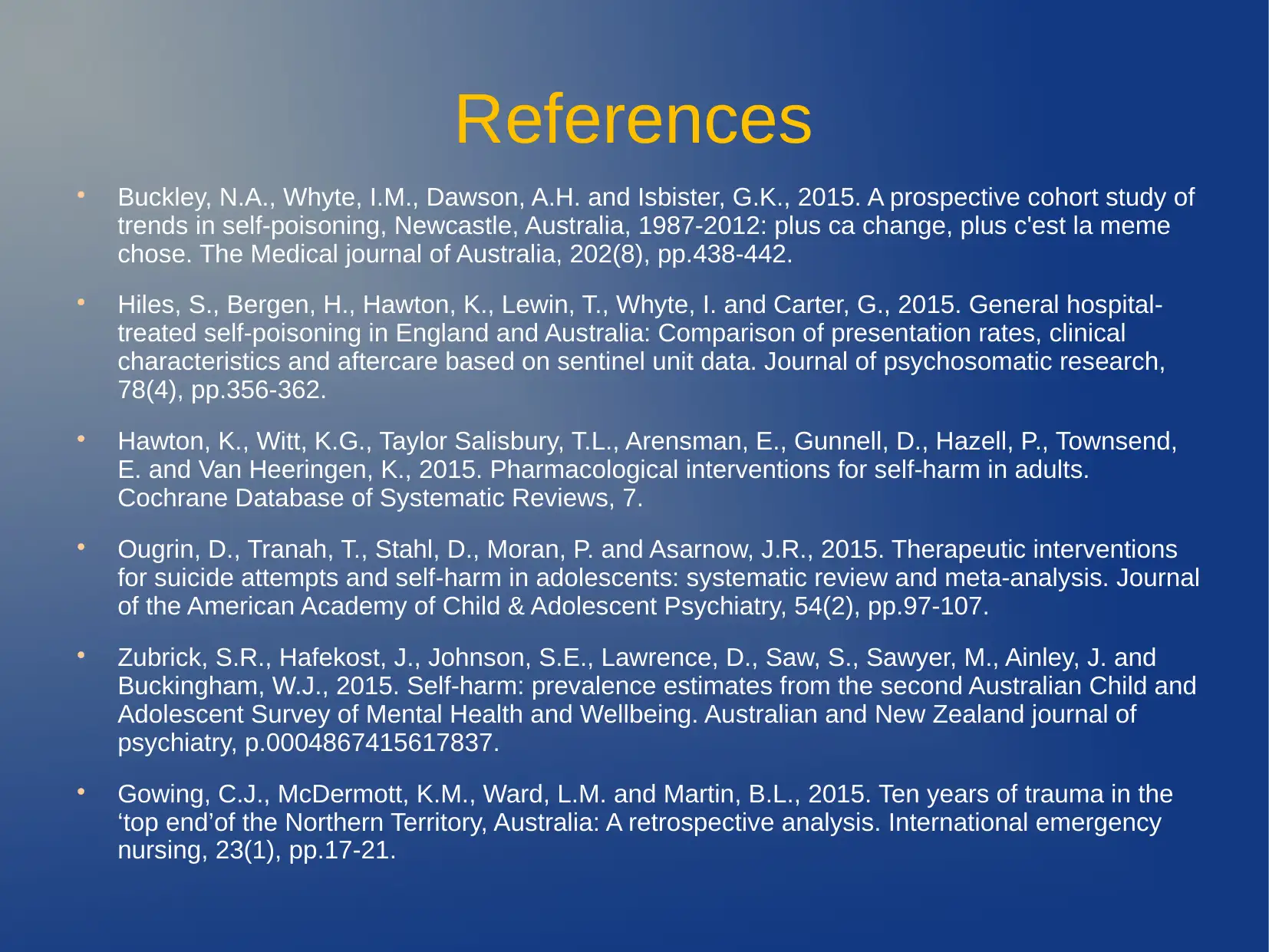






![[object Object]](/_next/static/media/star-bottom.7253800d.svg)